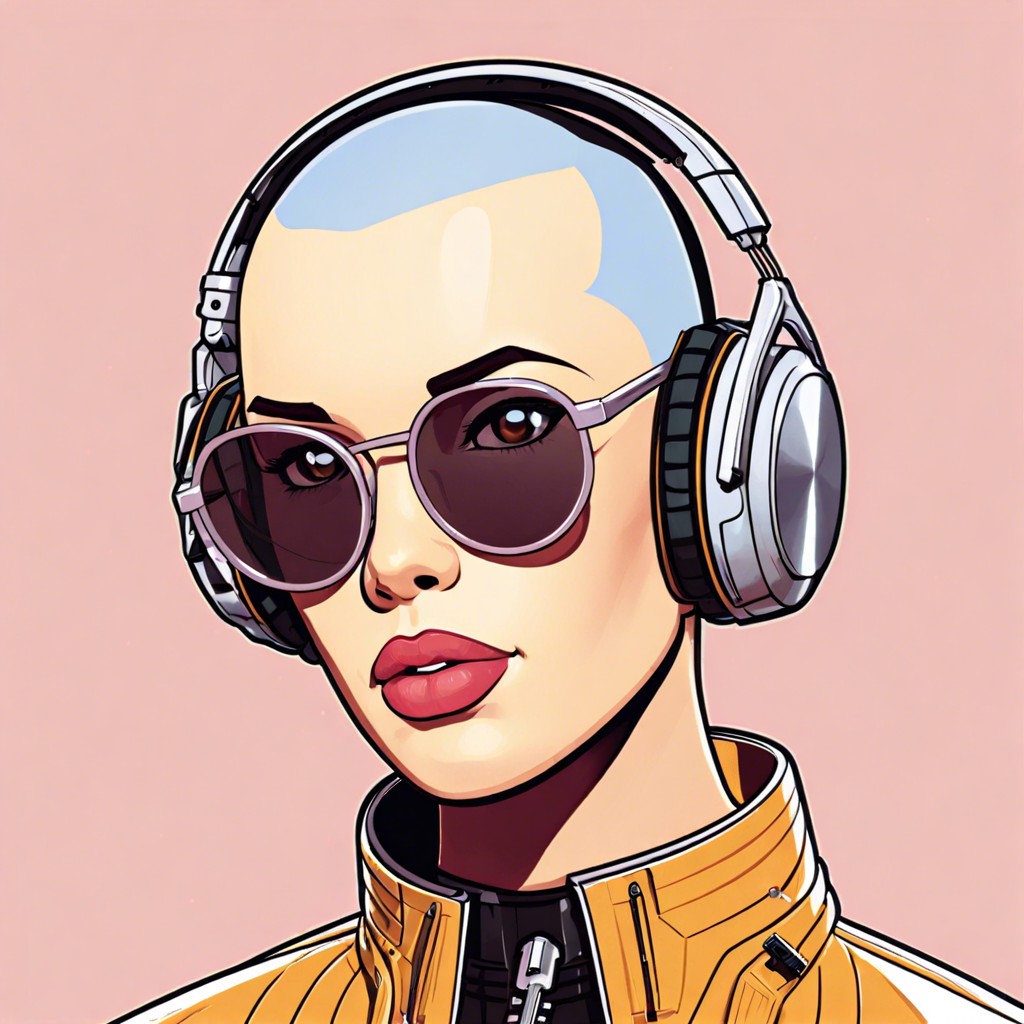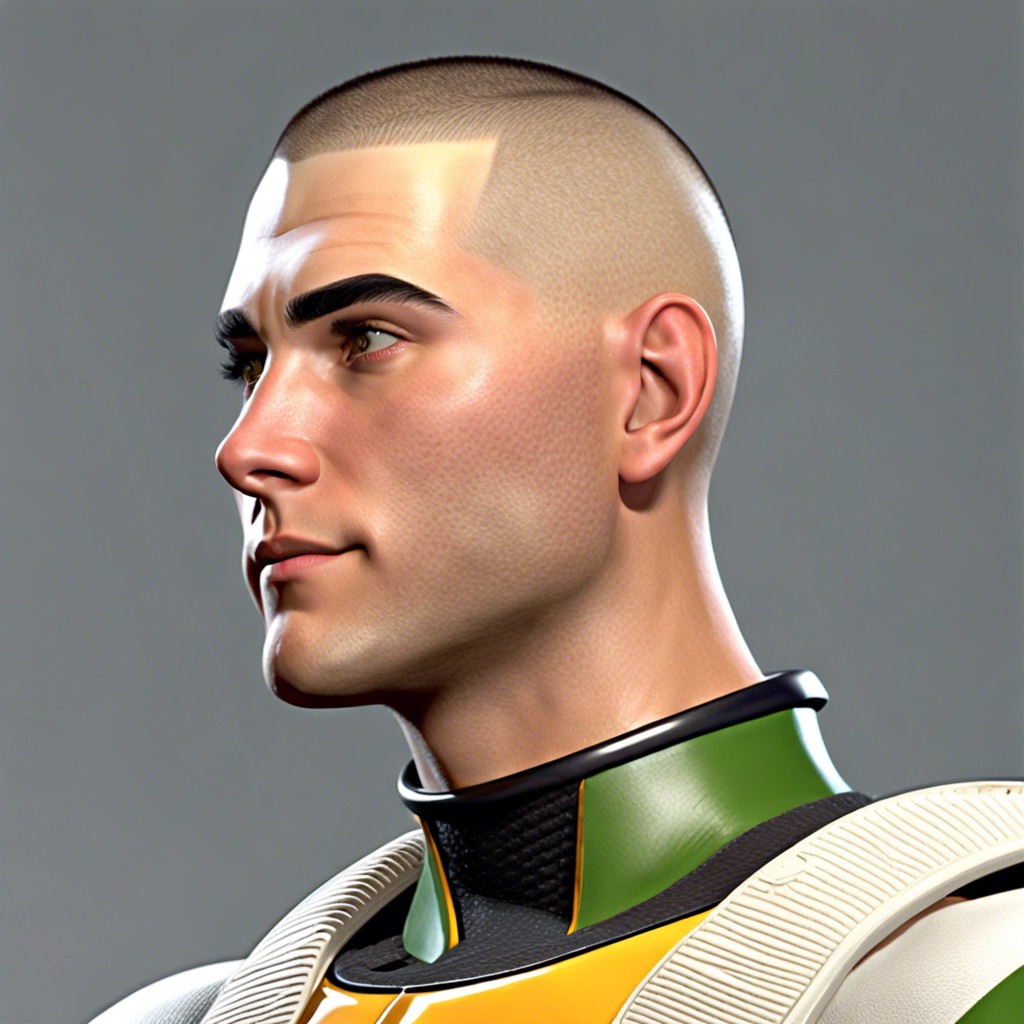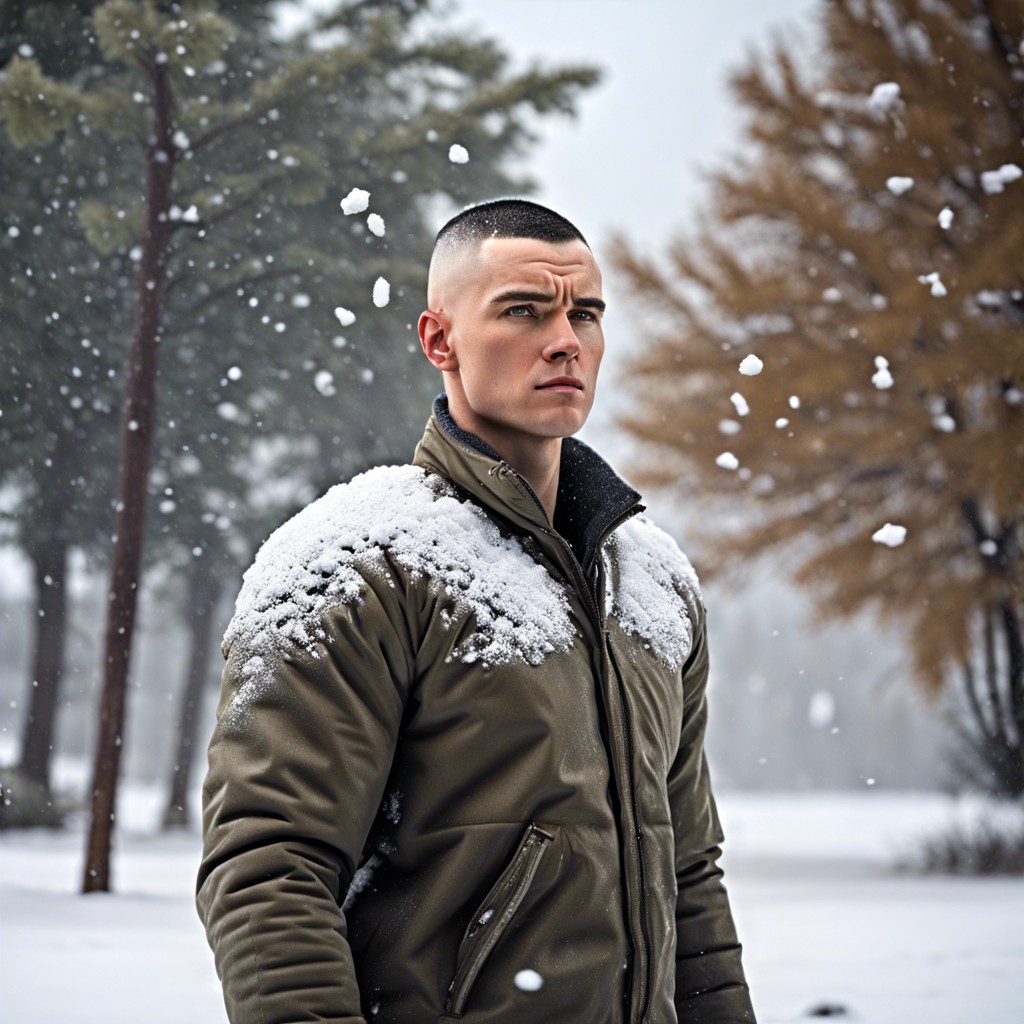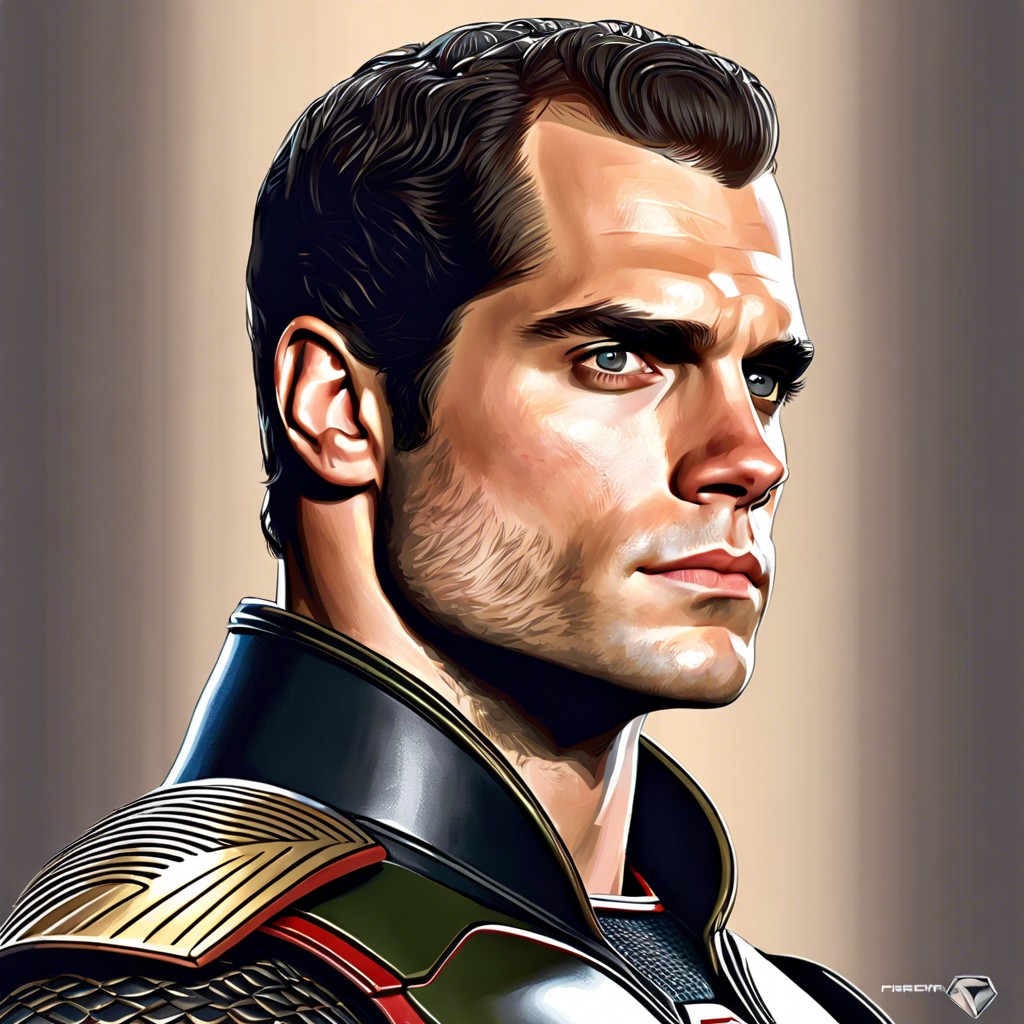Discover innovative ways to rock a burst fade buzz cut and elevate your personal style effortlessly.
Definition of Burst Fade Buzz Cut

A burst fade buzz cut features a semicircular fade around the ear that transitions to a shorter length as it merges with the top. This gradient effect radiates from the ear, resembling a burst pattern, hence the name.
It maintains length at the top of the head, offering a contrast between the buzzed and faded sections.
How to Achieve a Burst Fade Buzz Cut At Home

To execute the burst fade buzz cut at home, start with clippers at a lower guard number, tapering up around the ear and back to create a semicircular fade that mimics the ear’s curvature.
Gradually increase the guard size to blend the hair into longer lengths at the top. Use a detail trimmer to refine the edges of the fade, ensuring a smooth transition between the different hair lengths.
The Best Hair Types for a Burst Fade Buzz Cut
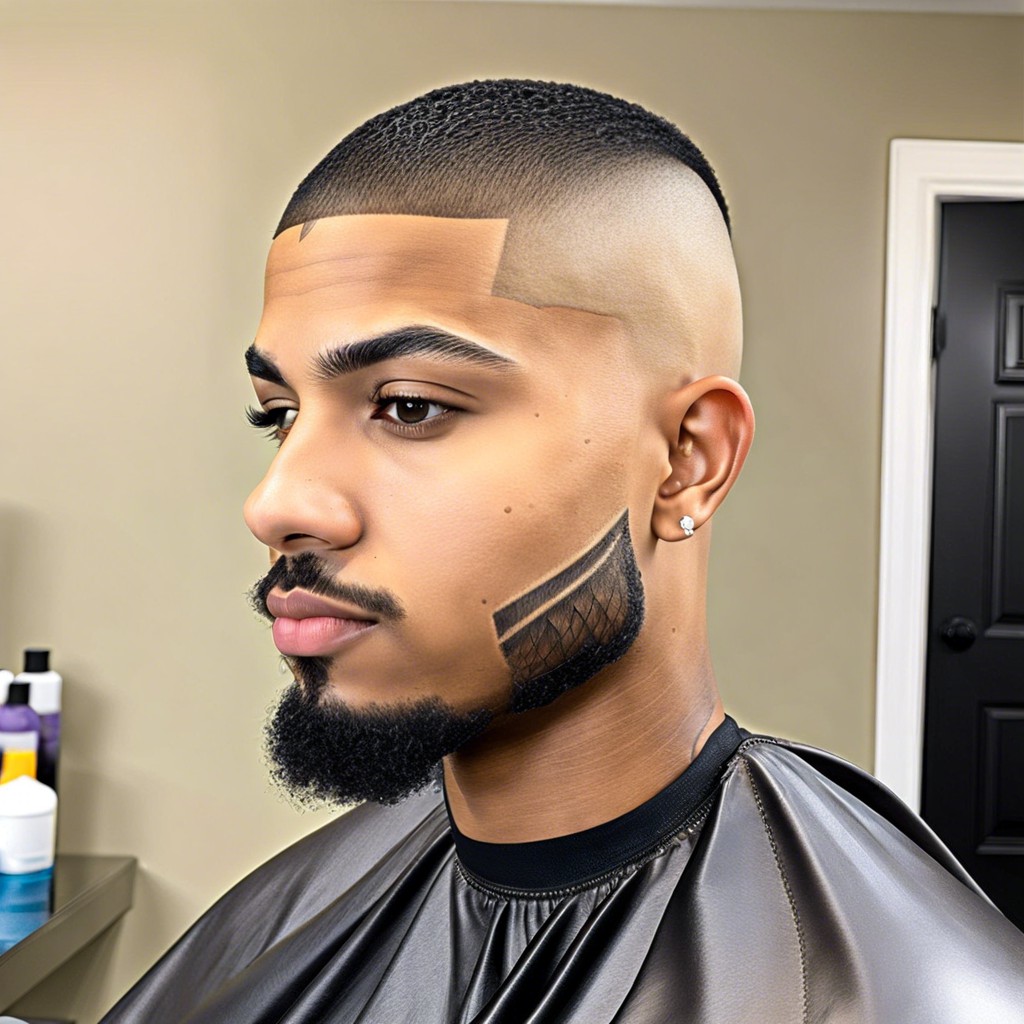
Straight and wavy hair textures provide a clean, crisp finish for a burst fade, making the gradation more noticeable and sharp.
Curlier hair offers a unique take on the style, giving the fade a more blended appearance, which can be advantageous for those seeking a subtler transition.
Thick hair holds the structured shape of the burst fade well, while those with finer hair might find the style requires more frequent touch-ups to maintain its definition.
Popular Celebrities With Burst Fade Buzz Cuts
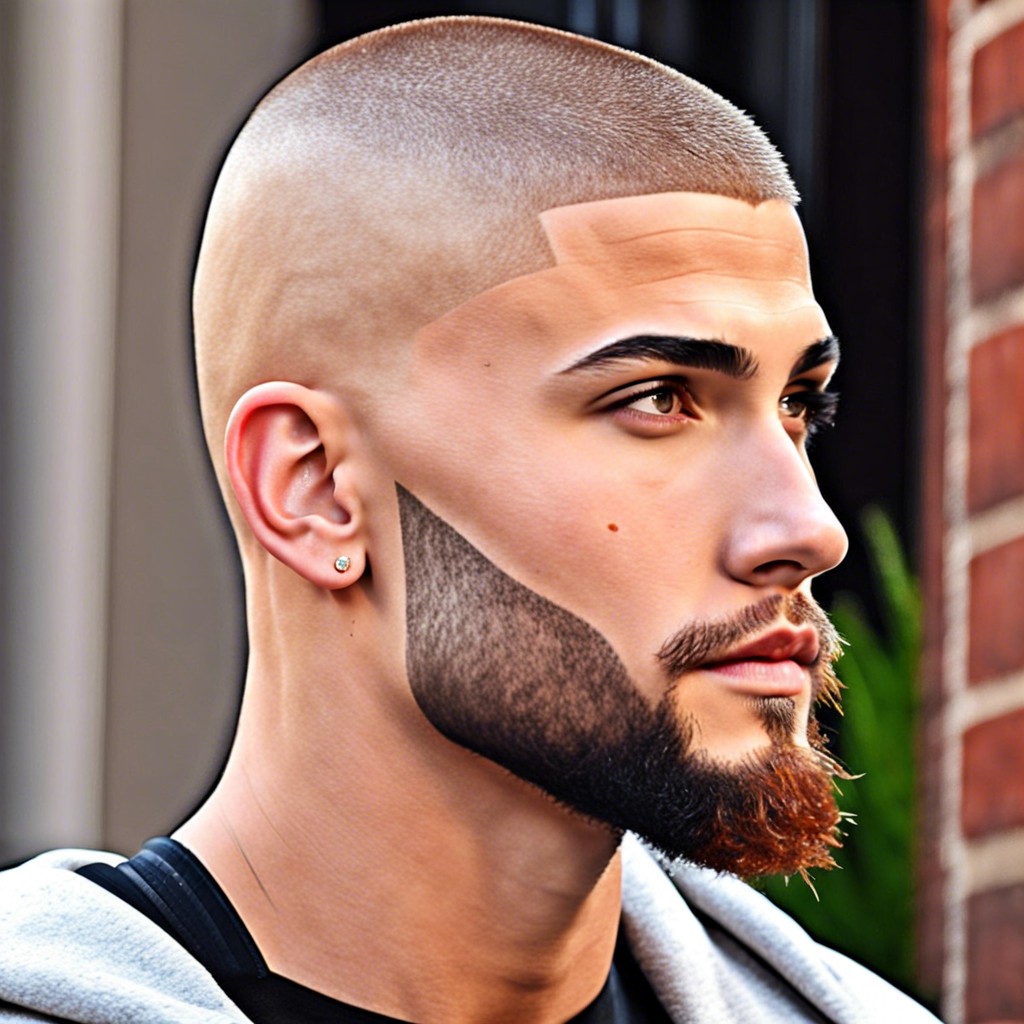
Drake’s refined take on the burst fade buzz cut exemplifies a fusion of crisp elegance with urban edge.
Usher often sports the style, adding a chic dimension to his dance-heavy performances and public appearances, showcasing the cut’s versatility.
The cut’s prominence in the spotlight, as displayed by Odell Beckham Jr., has contributed to its popularity among those seeking a modern, athletic aesthetic.
Matching Face Shapes With Burst Fade Buzz Cuts
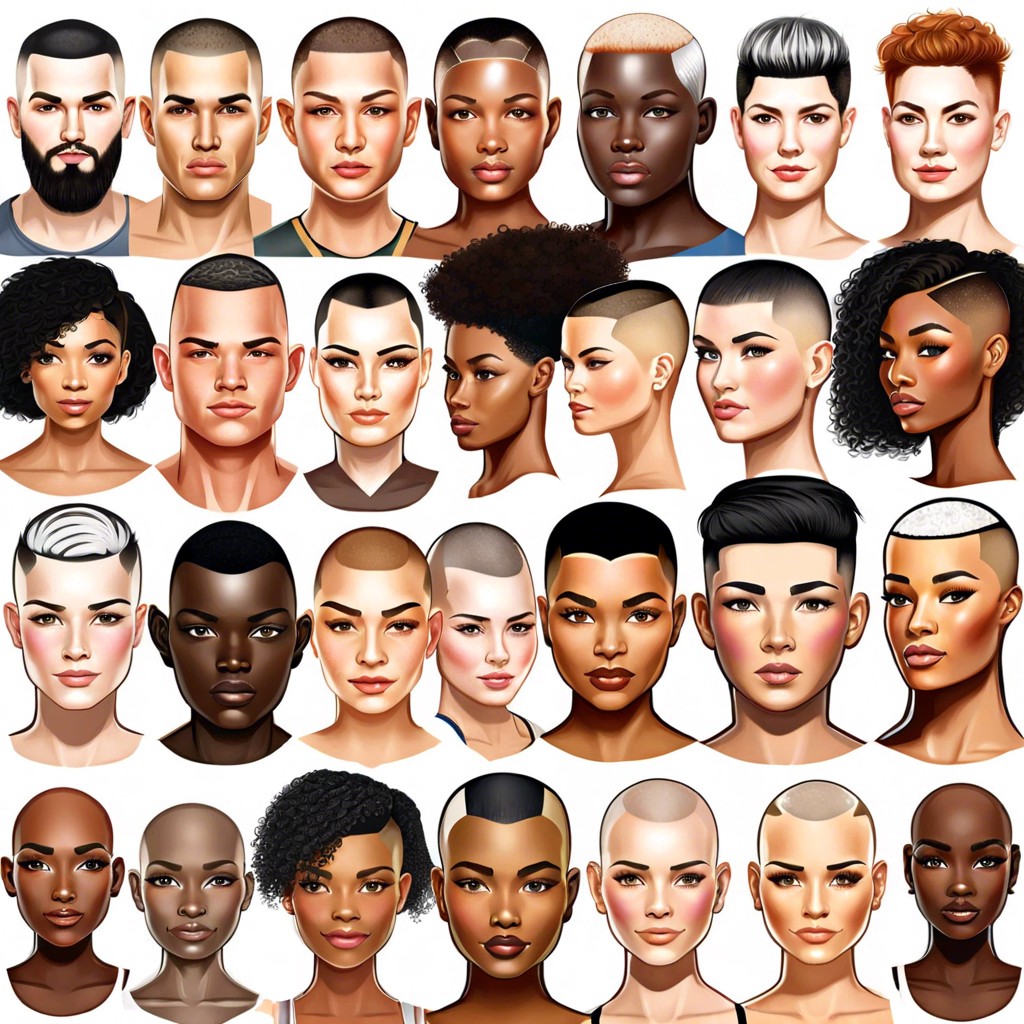
Oval faces benefit from the burst fade buzz cut’s rounded graduation, as it accentuates the face’s natural symmetry without overwhelming features.
Square-shaped faces are well-served by the softening effect of the burst fade’s curve, reducing the sharpness of the jawline.
Meanwhile, those with round faces should approach this style with caution—it can unintentionally widen the appearance of the face if not tailored correctly by the barber.
Styling Products Appropriate for Burst Fade Buzz Cuts
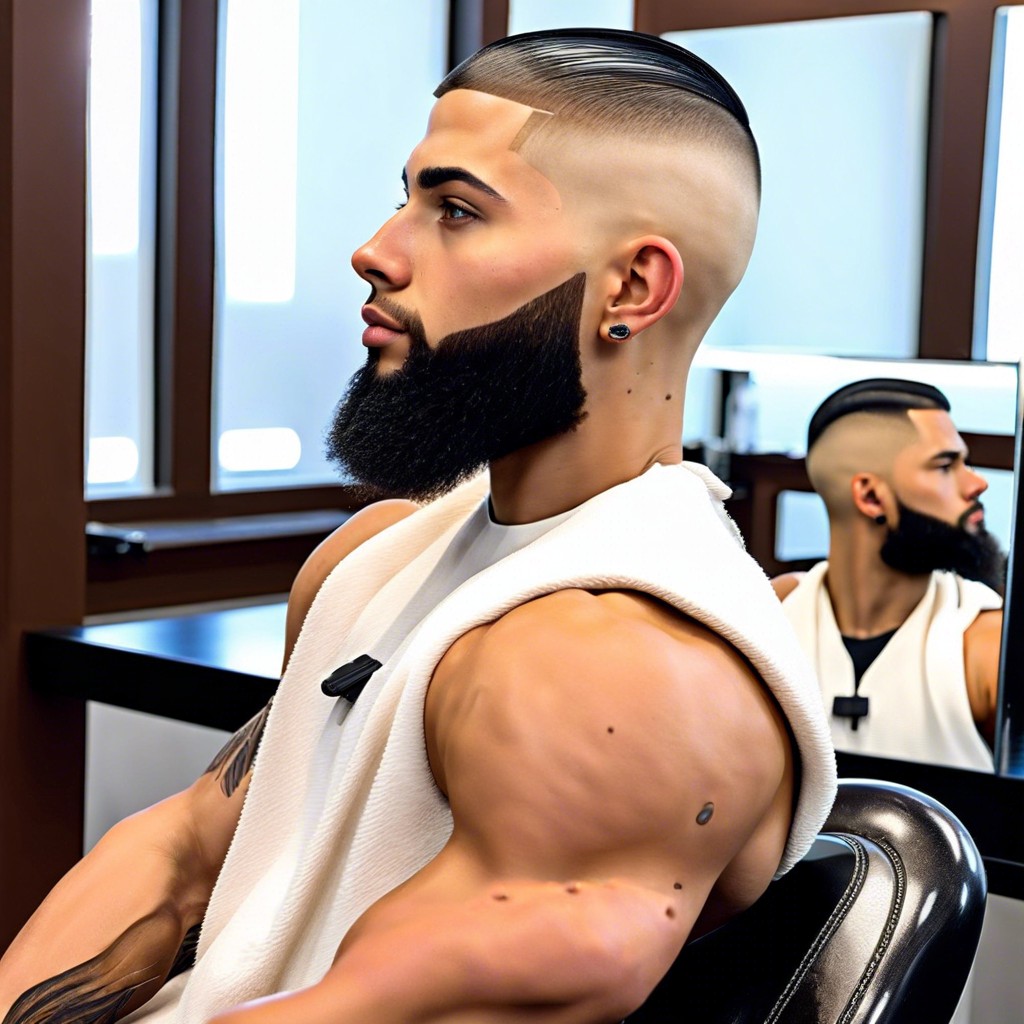
For a polished look, lightweight pomades or waxes can define a buzz cut while adding a touch of sheen without weighing hair down.
Texturizing sprays can enhance the buzz cut’s natural texture, giving it a modern, edgy finish.
Matte clays or paste are excellent choices to provide a structured yet flexible hold that maintains the shape of the burst fade throughout the day.
Maintenance Tips for Keeping a Burst Fade Buzz Cut Fresh
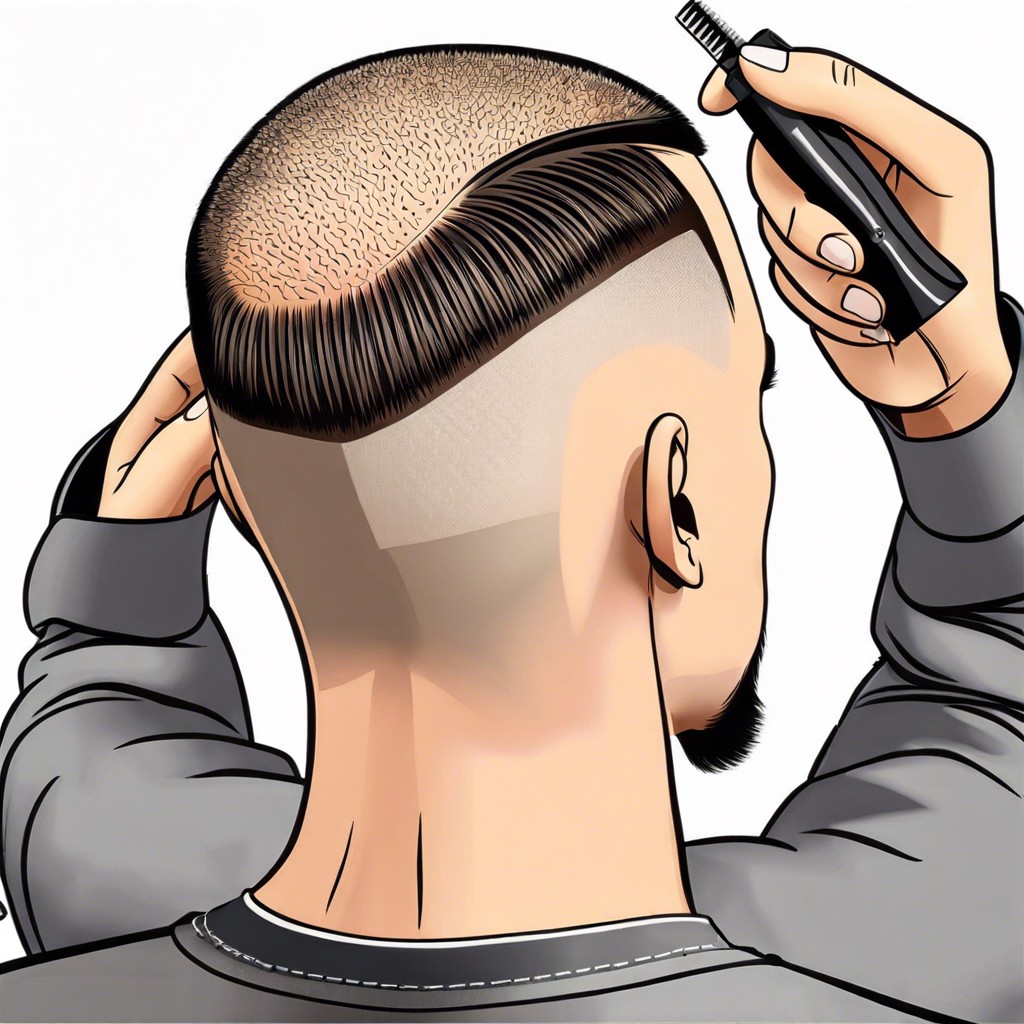
Regular touch-ups every two to three weeks are essential to maintain the sharp contrast of the burst fade. Use a quality shampoo and soft bristle brush to keep the short hair neat and the scalp healthy, preventing flakiness.
To preserve the style’s structure, apply a light hold pomade or wax for a clean, controlled look.
The History and Evolution of the Burst Fade Buzz Cut
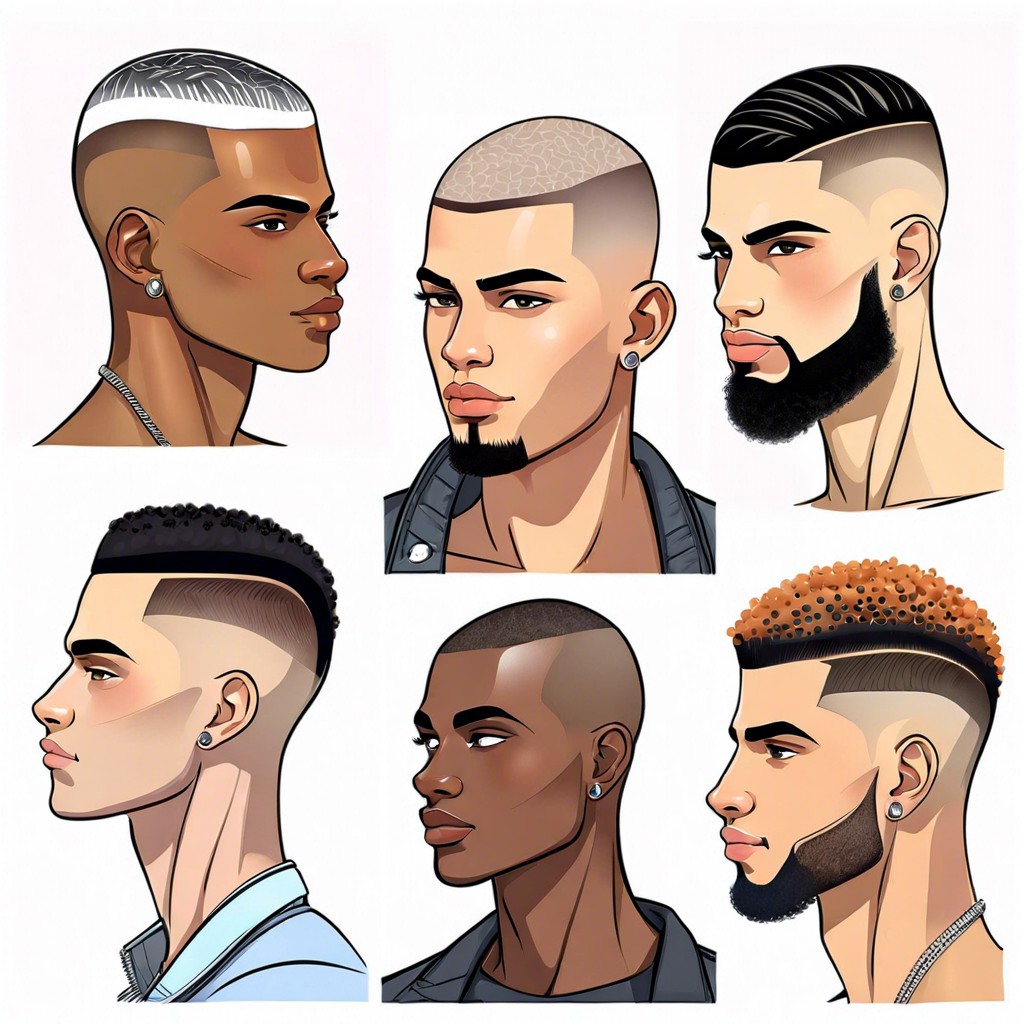
Originating in the African American community, the burst fade became popular in the 1980s as a fresh twist on traditional fades. Its unique circular fade pattern around the ears was a stylistic emblem in hip-hop culture.
Today, it’s a versatile and modern hairstyle that integrates seamlessly with various hair textures and lengths.
How to Communicate the Desired Burst Fade Intensity to Your Barber
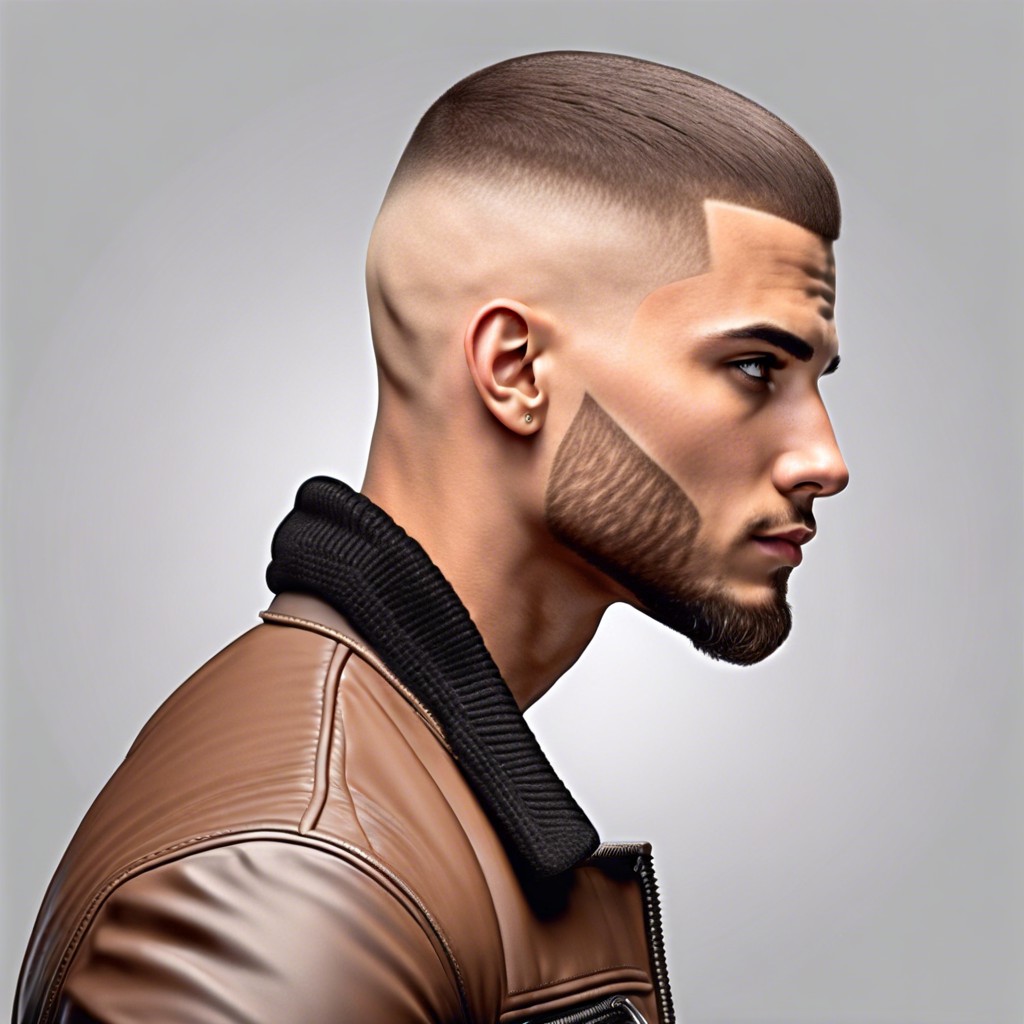
Bring reference images to ensure clarity on the gradient and shape you prefer for your burst fade.
Specify the starting point of the fade—above, at, or below the ear—and the level of skin exposure desired.
Articulate any personal quirks, such as a preference for a subtler blend or a more dramatic contrast between hair lengths.
The Difference Between a Traditional Fade and a Burst Fade in a Buzz Cut
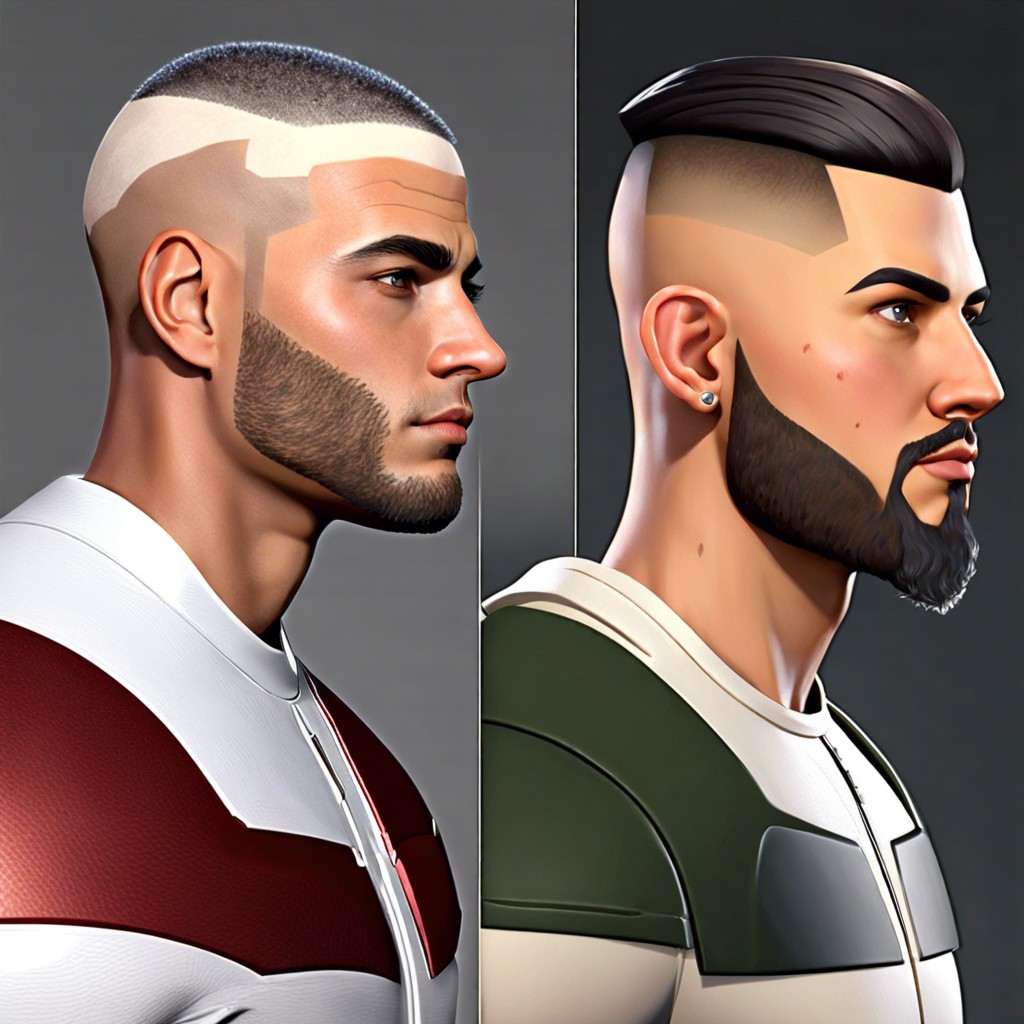
A traditional fade uniformly graduates in length from the bottom up, creating a blended transition around the head. In contrast, a burst fade radiates in a semi-circular pattern around the ear, resembling a sunburst shape, which is notably distinct from a standard fade. This style offers an edgier, more modern take and usually maintains more length at the sides.
Incorporating Designs or Patterns Into a Burst Fade Buzz Cut
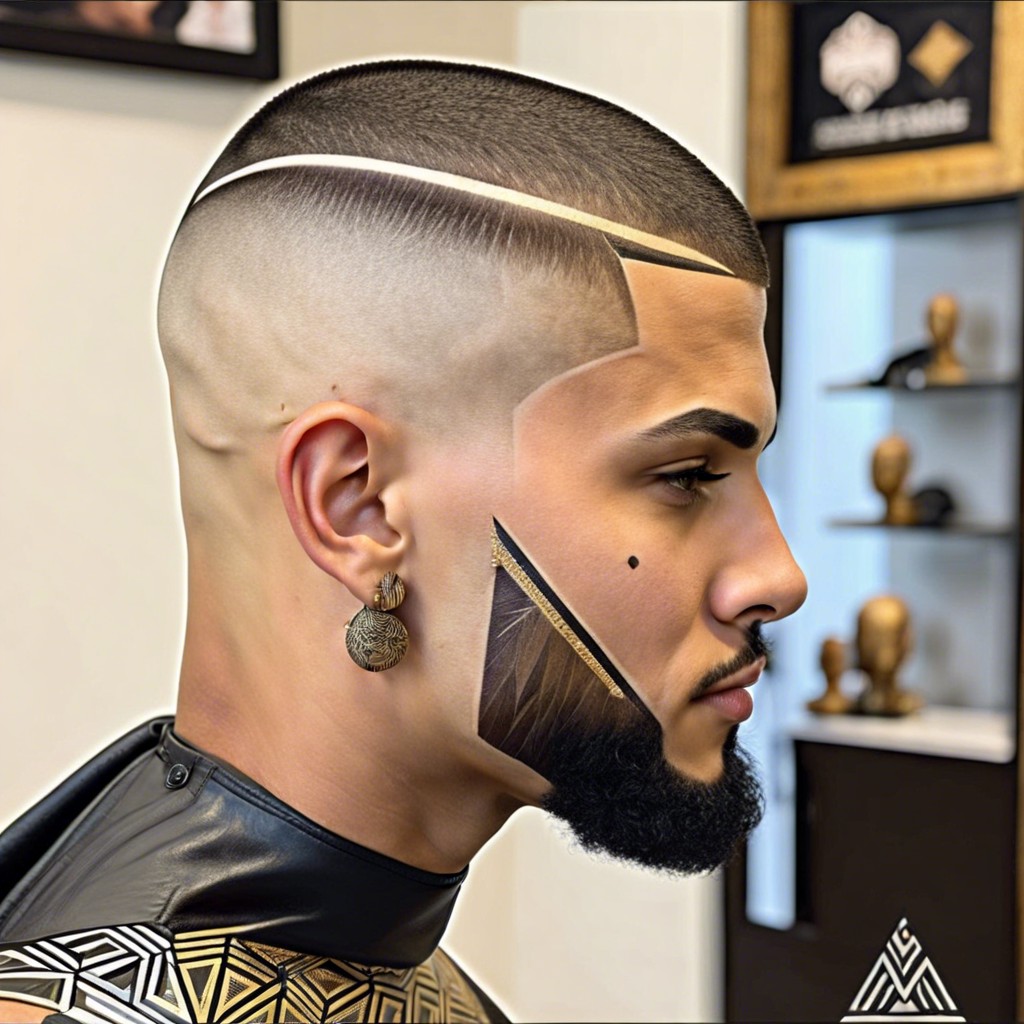
Adding personalized designs into a burst fade buzz cut can transform a standard style into a work of art, showcasing individuality.
Precision shaving can be used to etch creative patterns or even logos, making the haircut a statement piece.
These custom touches elevate the burst fade from a basic haircut to a unique expression of personal style.
The Duration a Burst Fade Buzz Cut Typically Lasts Before Needing a Touch-up
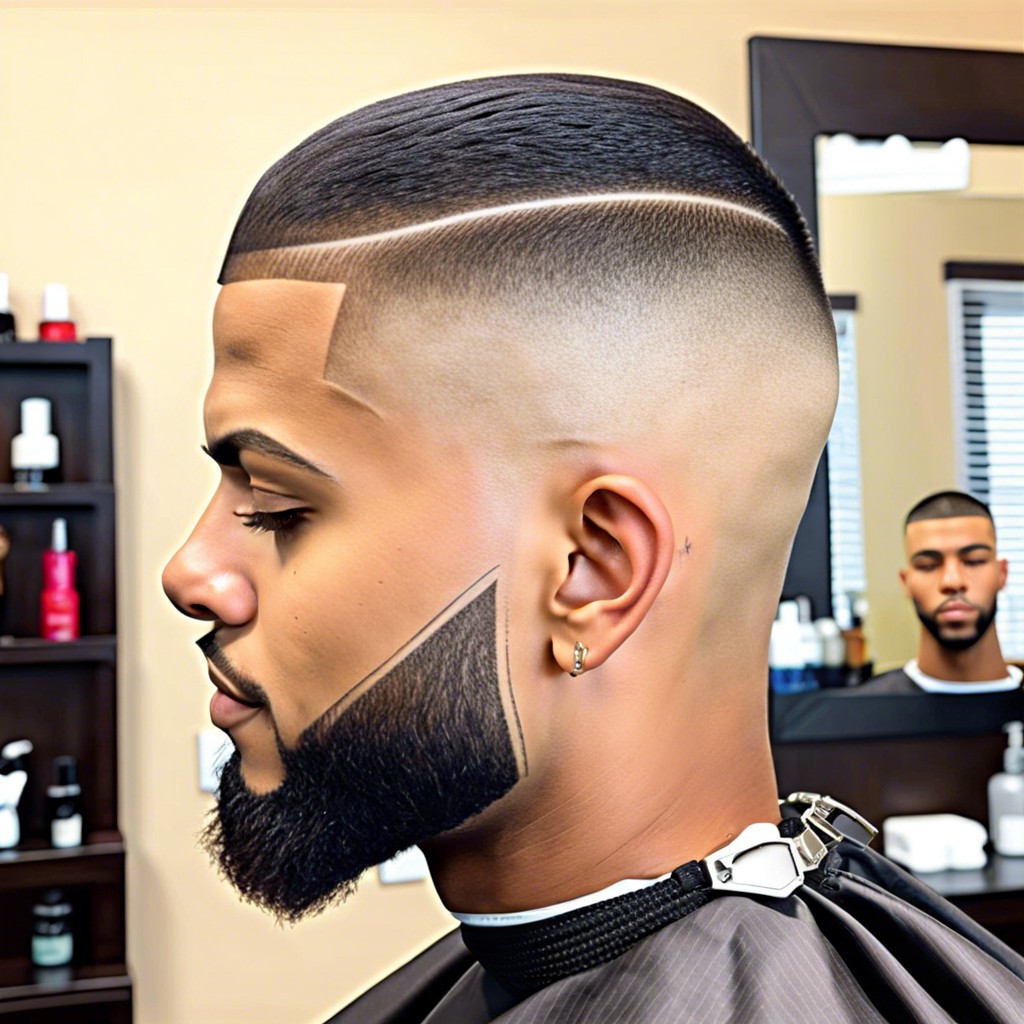
Typically, a burst fade buzz cut will require maintenance every three to four weeks to keep the fade sharp and clean.
Hair growth can blur the precise edges of the fade, necessitating regular barber visits.
A proper upkeep schedule ensures that the haircut’s bold statement and aesthetic are preserved.
Seasonal Considerations for Sporting a Burst Fade Buzz Cut
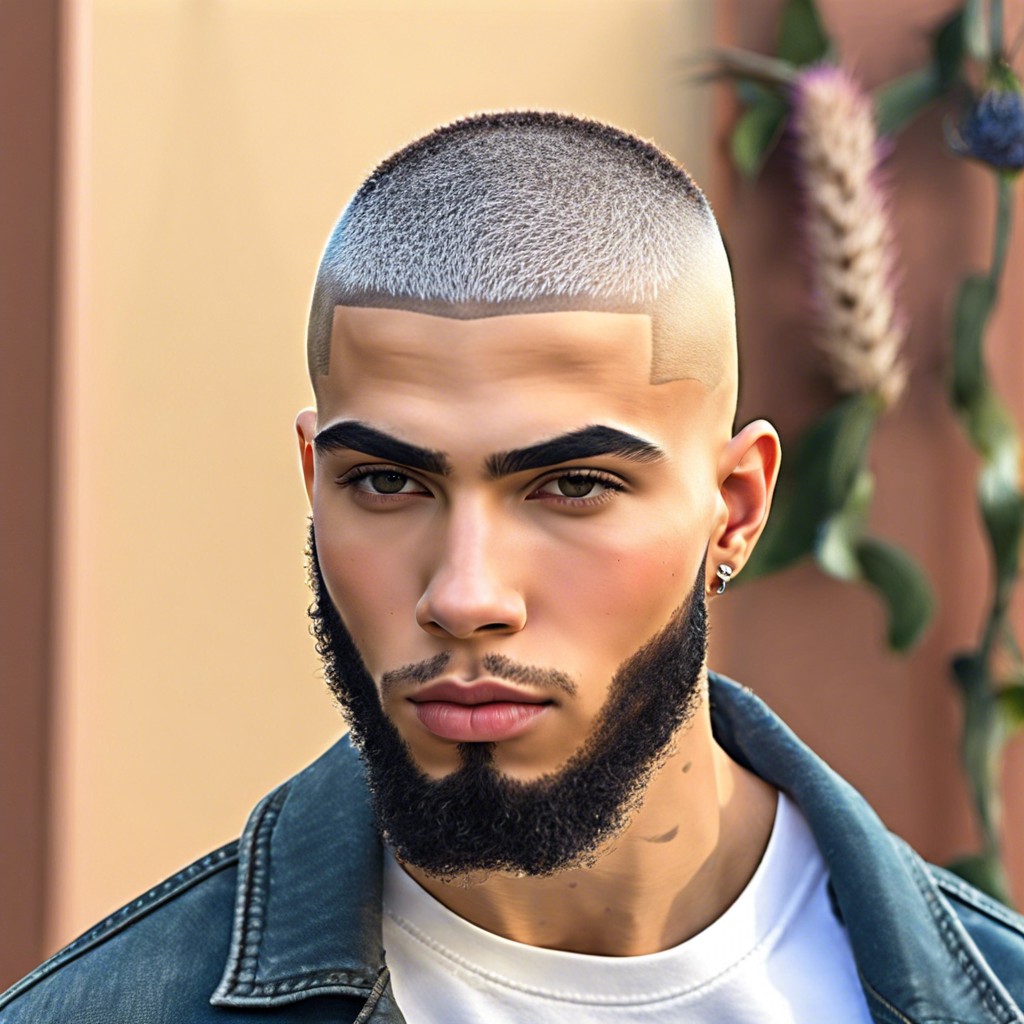
Warm weather seasons are the perfect time for a burst fade buzz cut, offering a cool and breathable option for one’s summer style.
However, during colder months, it’s important to consider additional headwear to protect the scalp from lower temperatures.
Bear in mind the increased exposure to sun in summer, necessitating the use of hair products with SPF to protect the scalp from sunburn.
Before and After Examples of Burst Fade Buzz Cuts
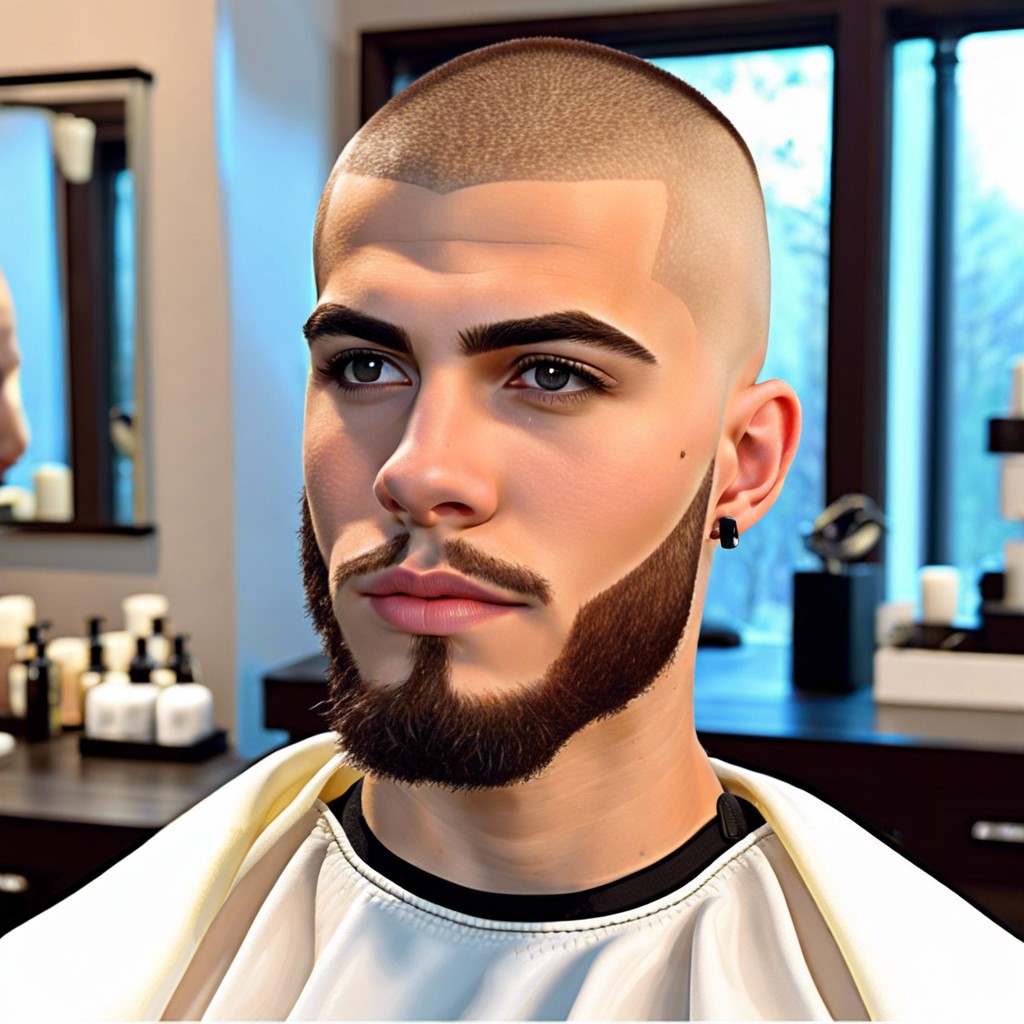
Visual before and after comparisons showcase the transformative impact of a burst fade, giving a clear perspective on the silhouette and texture it adds.
These examples highlight how the cut enhances facial features and adds a modern twist to the classic buzz-cut style.
They serve as an inspiration and a guide for individuals considering this dynamic haircut.
Potential Challenges When Growing Out a Burst Fade Buzz Cut
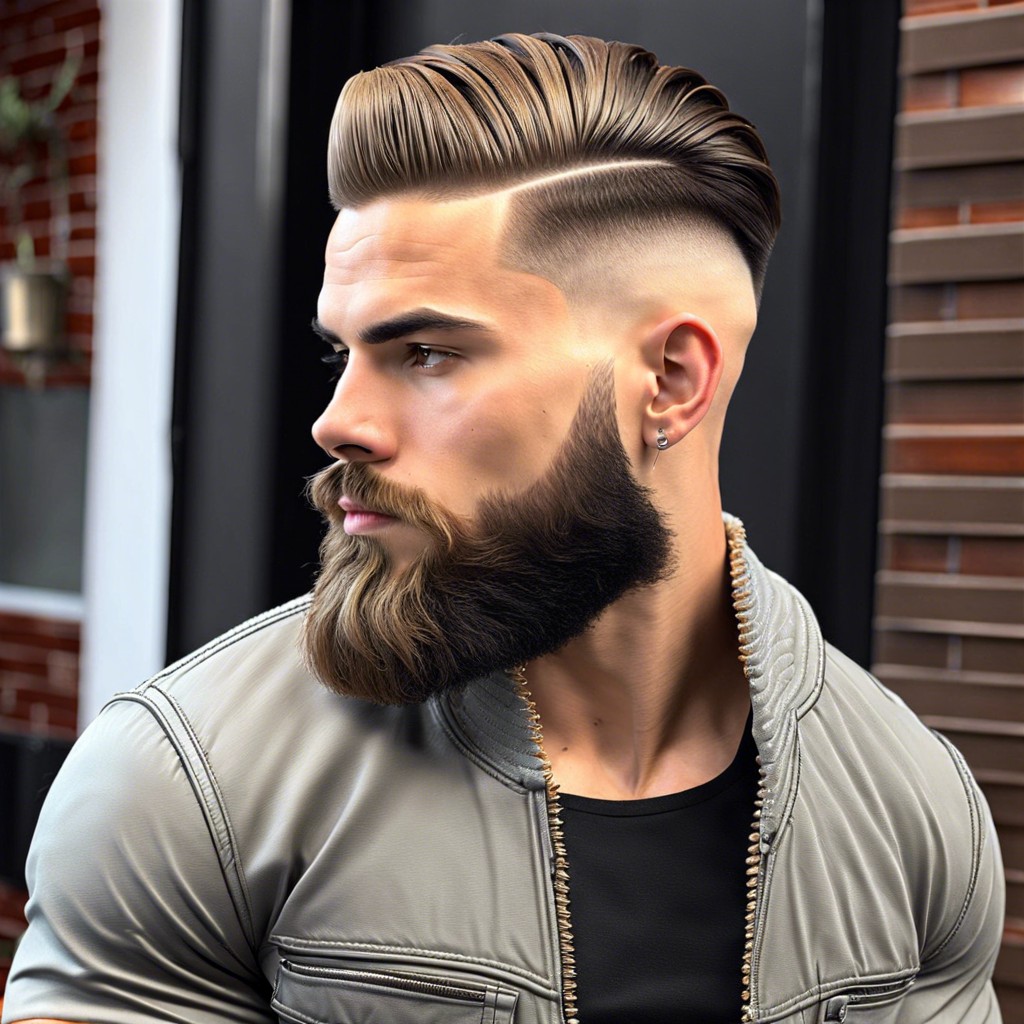
Transitioning from a burst fade buzz cut to longer hair can lead to uneven growth patterns. It may be challenging to maintain a neat appearance without regular trims during the process.
Hairstyle adaptability is limited as the distinctive fade loses its shape and requires restyling strategies.
